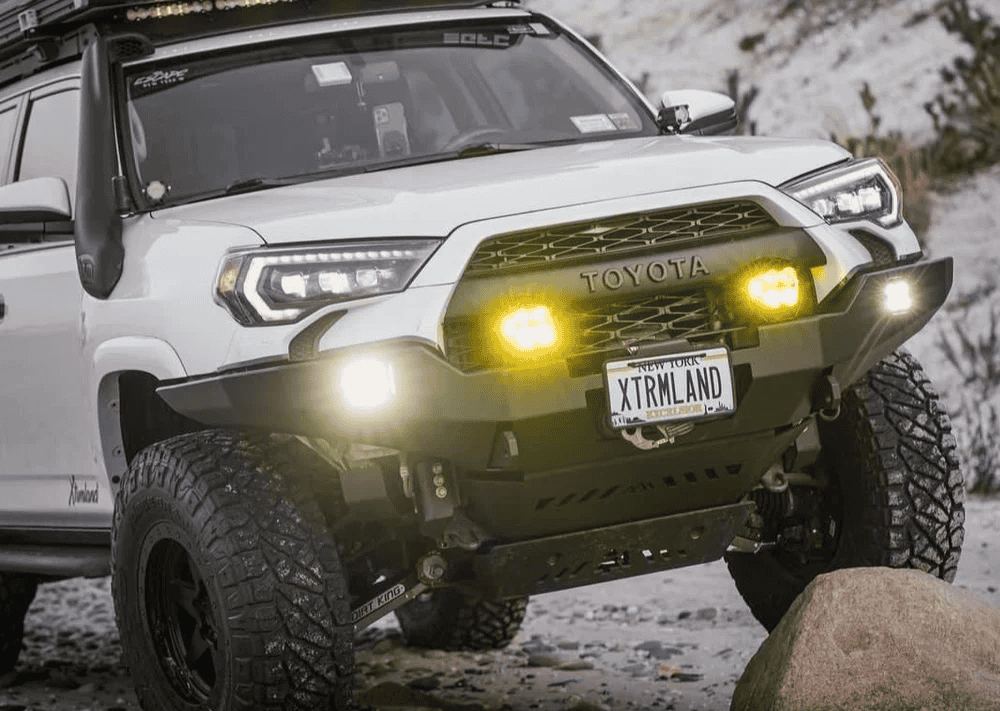Overland Vehicles

Vehicle based exploration means using your vehicle as both transportation and a mobile camp. Instead of hiking in with everything on your back, you carry smart, space efficient gear inside a capable rig, then day hike, ride, paddle, or climb from that rolling base. The goal is not speed, but range, access, and self sufficiency in varied terrain.
The approach rewards careful planning. You study maps, weather windows, land management rules, and fuel realities before you turn the key. You pack for the specific region and season, balancing comfort against weight and redundancy. Most of all, you build in margins for the unknown and respect for the places you visit.
A compact SUV can reach many trailheads if you pack light and manage tire pressure wisely. Pickup trucks offer payload for water, tools, and spares while keeping the cab uncluttered. Vans maximize interior volume for people, bikes, and sleep systems, making them strong platforms for long stays and variable weather.
Graded forest roads demand less clearance than rutted two tracks or rocky passes. Soft surfaces like sand call for lower tire pressures and momentum management, while slick clay rewards patience and traction aids. Research gate schedules, seasonal closures, and private inholdings to avoid dead ends and fines.
Recovery and comms are non negotiable in remote zones. Bring a shovel, traction boards, a rated tow strap, and soft shackles. Pair maps and GPX routes with a satellite communicator for check ins and emergency use. Tell a contact where you are going and when you plan to return.
Start with the basics: tires appropriate for terrain, a full size spare, and a jack you have tested on your vehicle. Add underbody protection and lighting that improves near field visibility without blinding others. Keep fluids, belts, and filters current; preventative maintenance is your quiet superpower.
Navigation is layered. Paper maps show context, offline maps offer detail, and a dash mounted device keeps your eyes up. Calibrate odometers to your tires and keep notes on fuel intervals and landmarks. The more you record, the easier it is to adapt when plans change.
Ethics matter. Travel on open routes, avoid wet trails, and camp on durable surfaces. Pack out waste and gray water. Idle less and tread lightly to protect fragile soils and soundscapes. Responsible habits keep routes open and wildlife stress low.
Trip design starts with time. How many days do you have, and how far can you reasonably travel on mixed surfaces without rushing camp or recovery margins. Route selection should match your experience, vehicle clearance, and the current weather pattern, not the highlight reel you saw online.
Spring runoff, summer monsoons, fall winds, and winter ice each change surface conditions and risk profiles. In deserts, flash floods can cut roads for hours or days. In alpine zones, a north facing drift can block a pass well into early summer. Build backup routes that still meet your goals if your primary plan closes.
Legal access deserves attention. Confirm land status, closures, and permit requirements for target areas. Some destinations cap dispersed camping or enforce stay limits. When in doubt, speak with rangers and read the latest notices before you head out of service.
As you refine your approach, align your vehicle with your travel style. If you haul bikes, boards, or camera kits, interior storage and modular tie downs save time and protect gear. If you travel rougher tracks, suspension tuning, recovery points, and body protection move to the top of the list.
Purpose built platforms simplify the equation. If you want a rig tailored to real routes and real payloads, explore Overland rigs designed for backcountry travel. When your plan calls for integrated power, storage, and protection, a focused package like a Custom overland upfit can turn intent into dependable capability.
A thoughtful builder listens first, then designs around your miles, your crew, and your destinations. That means mapping out electrical loads, specifying mounts for your bikes or moto, selecting lighting for your terrain, and tuning suspension for actual weight. It also means clean installs that are easy to service down the road.
A well planned handoff includes system walkthroughs, road tests, and advice on shakedown trips. You should leave the shop knowing how to manage charge rates, tire pressures, and recovery basics. That knowledge stacks with each trip, turning new regions into familiar ground.
Look for a team that builds for function first and backs it with real world experience. If you want to understand culture and craft before you commit, start here: Why choose OZK Customs.
You bring the routes, the season, and the pace you want to keep. We bring design, fabrication, and field informed installs that take the stress out of vehicle based exploration. Share your must see places, how you camp, and what you carry, and we will help you shape a rig that fits. Begin with our overview of Overland rigs and imagine where your next trail begins.
Ready to build a rig that matches your routes and pace of travel? Talk with OZK Customs about a purpose built overland or adventure van. Our team designs and upfits vehicles for real terrain, real weather, and real life on the road. Share your trip goals and let us map a build that gets you there.
ADDRESS:
6159 E Huntsville Rd, Fayetteville, AR 72701
PHONE:
(479) 326-9200
EMAIL:
info@ozkvans.com